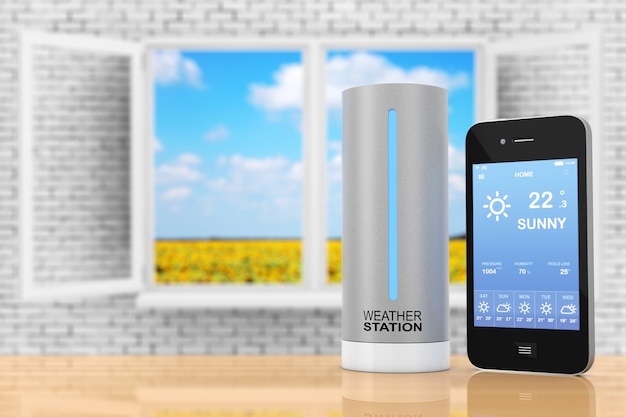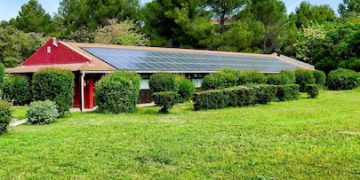Unlock Savings: Energy Efficiency Tax Credits for US Homeowners

Tax Credits for Energy Efficiency: Reduce Your Home’s Carbon Footprint and Your Tax Bill offer significant financial incentives to US homeowners who invest in energy-efficient upgrades, lowering both their environmental impact and annual taxes while improving home comfort and value.
Are you looking to improve your home’s energy efficiency while also saving money on your taxes? The **Tax Credits for Energy Efficiency: Reduce Your Home’s Carbon Footprint and Your Tax Bill** provide a fantastic opportunity for homeowners in the US to do just that. By investing in energy-efficient upgrades, you can reduce your carbon footprint and significantly lower your tax bill.
Understanding Energy Efficiency Tax Credits
Energy efficiency tax credits are government-sponsored incentives designed to encourage homeowners to make energy-saving improvements to their properties. These credits can significantly reduce the upfront costs associated with upgrading to more efficient systems and appliances, making sustainable choices more accessible.
These tax credits not only benefit individual homeowners but also contribute to broader environmental goals by reducing overall energy consumption and promoting a more sustainable future. Let’s delve into the details of these valuable credits.
Types of Energy Efficiency Tax Credits
There are primarily two types of energy efficiency tax credits available to homeowners in the US: the Residential Clean Energy Credit and the Energy Efficient Home Improvement Credit. Each targets different aspects of home energy efficiency.
Understanding the nuances of each credit ensures you can maximize your potential savings while making informed decisions about your home upgrades.
- Residential Clean Energy Credit: Focuses on renewable energy sources like solar, wind, and geothermal systems.
- Energy Efficient Home Improvement Credit: Covers improvements to your home’s envelope, such as insulation, windows, and doors, as well as efficient heating and cooling equipment.
- Eligibility Requirements: Both credits have specific requirements regarding the types of equipment and their efficiency ratings.
- Credit Amounts: The amount of the credit varies depending on the type of improvement and the year it was installed.

In conclusion, energy efficiency tax credits are a valuable tool for both homeowners and the environment, offering financial incentives for sustainable home improvements.
Residential Clean Energy Credit: Harnessing Renewable Power
The Residential Clean Energy Credit is a federal tax credit for investments in renewable energy systems such as solar, wind, and geothermal. This credit encourages homeowners to adopt clean energy technologies by offsetting a portion of the installation costs.
By taking advantage of this credit, you can significantly reduce your reliance on traditional energy sources and contribute to a cleaner, more sustainable energy future.
Eligible Renewable Energy Systems
The Residential Clean Energy Credit covers a range of renewable energy systems, each designed to harness natural resources for electricity or heating. Knowing which systems qualify ensures you can make the right investment for your home and pocketbook.
These systems not only reduce your carbon footprint but also increase the value of your home while offering long-term energy savings.
- Solar Electric Panels: Convert sunlight into electricity for your home.
- Solar Water Heaters: Use solar energy to heat water for domestic use.
- Wind Turbines: Generate electricity from wind power.
- Geothermal Heat Pumps: Transfer heat to and from the earth for heating and cooling.
The Residential Clean Energy Credit provides a compelling incentive for homeowners to invest in renewable energy systems, fostering a greener future while reducing energy costs.
Energy Efficient Home Improvement Credit: Enhancing Your Home’s Envelope
The Energy Efficient Home Improvement Credit is designed to incentivize homeowners to make improvements that enhance their home’s energy efficiency. This includes upgrades to insulation, windows, doors, and certain heating and cooling equipment.
By improving your home’s envelope, you can reduce energy waste, lower utility bills, and create a more comfortable living environment.

Qualifying Home Improvements
To qualify for the Energy Efficient Home Improvement Credit, the improvements must meet specific energy efficiency standards set by the IRS. Choosing the right materials and equipment is crucial for maximizing your tax benefits.
These improvements not only enhance your home’s energy performance but also increase its overall value and appeal.
- Insulation: Must meet specific R-value requirements to reduce heat loss or gain.
- Energy-Efficient Windows, Doors, and Skylights: Must meet ENERGY STAR requirements.
- Efficient Heating and Cooling Equipment: Includes heat pumps, central air conditioners, and water heaters that meet or exceed certain efficiency standards.
By strategically investing in qualifying home improvements, you can take full advantage of the Energy Efficient Home Improvement Credit and enjoy long-term energy savings and enhanced home comfort.
Maximizing Your Tax Credit: Tips and Strategies
To maximize your energy efficiency tax credits, it’s essential to understand the eligibility criteria, keep accurate records, and plan your upgrades strategically. Proper planning can make a significant difference in the amount of credit you receive.
By following these tips, you can ensure you’re making the most of these valuable incentives and achieving your energy efficiency goals.
Documentation and Record-Keeping
Accurate documentation is crucial for claiming energy efficiency tax credits. Keep detailed records of all purchases and installations to support your claim.
Proper record-keeping not only ensures your eligibility for the credit but also simplifies the tax filing process.
- Keep Receipts: Save all receipts for qualifying purchases.
- Installation Records: Document the installation dates and details of your improvements.
- Manufacturer Specifications: Retain product specifications and energy efficiency ratings.
- Tax Forms: Familiarize yourself with the relevant tax forms and instructions.
Maintaining thorough documentation will help you navigate the tax credit process smoothly and maximize your potential savings.
Navigating the IRS Forms and Requirements
Claiming energy efficiency tax credits involves completing specific IRS forms and adhering to certain requirements. Understanding these forms and requirements is crucial for a successful tax filing.
By familiarizing yourself with the necessary paperwork, you can avoid errors and ensure you receive the credits you’re entitled to.
Key IRS Forms for Energy Efficiency Credits
The IRS provides specific forms for claiming energy efficiency credits. Completing these forms accurately is essential for a successful claim.
Understanding the purpose and requirements of each form will streamline the tax filing process and ensure you receive the maximum credit amount.
- Form 5695: Residential Energy Credits – Used to claim both the Residential Clean Energy Credit and the Energy Efficient Home Improvement Credit.
- Instructions for Form 5695: Provides guidance on how to complete the form and understand the eligibility requirements.
Familiarizing yourself with these IRS forms and instructions will empower you to claim your energy efficiency tax credits with confidence and accuracy.
Future of Energy Efficiency Tax Credits
The future of energy efficiency tax credits looks promising as governments continue to prioritize sustainable energy solutions. Anticipate potential changes and extensions to existing credits, as well as the introduction of new incentives.
Staying informed about these developments will enable you to make strategic decisions about your home improvements and maximize your long-term savings.
Potential Changes and Extensions
Energy efficiency tax credits are subject to periodic review and potential changes by lawmakers. Staying updated on these developments is crucial for homeowners and industry professionals.
Anticipating potential changes will allow you to plan your investments strategically and take advantage of available incentives before they expire or are modified.
- Extension of Existing Credits: Keep an eye out for potential extensions of current tax credits.
- Changes in Eligibility Requirements: Be aware of any modifications to the eligibility criteria for different types of improvements.
- New Incentives: Stay informed about the introduction of new energy efficiency incentives at the federal, state, and local levels.
Staying proactive and informed about the future of energy efficiency tax credits will position you to take advantage of the best available incentives and contribute to a more sustainable future.
| Key Point | Brief Description |
|---|---|
| 💡 Energy Efficiency Tax Credits | Government incentives for energy-saving home upgrades. |
| ☀️ Residential Clean Energy Credit | Federal tax credit for renewable energy systems like solar panels. |
| 🏠 Home Improvement Credit | Incentives for upgrades like insulation and efficient windows. |
| 📝 Accurate Documentation | Keep detailed records of purchases and installations. |
FAQ
Energy efficiency tax credits are government-backed incentives designed to encourage homeowners to invest in energy-saving upgrades for their properties, reducing the overall energy consumption and promoting sustainability.
The Residential Clean Energy Credit is a federal tax credit for investments in renewable energy systems for your home. This includes solar electric panels, solar water heaters, wind turbines, and geothermal heat pumps.
Qualifying improvements include insulation, energy-efficient windows, doors, and skylights, as well as efficient heating, cooling, and water heating equipment that meets or exceeds efficiency standards.
To claim these credits, you need to fill out IRS Form 5695, Residential Energy Credits, and attach it to your federal income tax return. Be sure to keep records of all purchases and installations.
You can find detailed information on the IRS website, ENERGY STAR website, and by consulting with a qualified tax professional who can provide personalized advice based on your situation.
Conclusion
By understanding and leveraging Tax Credits for Energy Efficiency: Reduce Your Home’s Carbon Footprint and Your Tax Bill, US homeowners can make significant strides toward a more sustainable and financially sound future. Investing in energy-efficient upgrades not only reduces your carbon footprint but also lowers your tax liability and utility bills, creating a win-win scenario for both your wallet and the environment.





